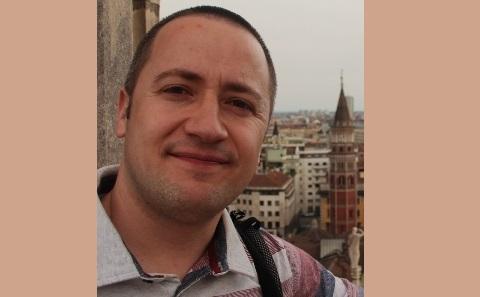IfLS Imaging Seminar: Bio-imaging with multi-modal high-resolution microscopy at the Francis Crick Institute Event

- Time:
- 16:00 - 17:00
- Date:
- 14 July 2016
- Venue:
- University of Southampton, Highfield Campus, Building 85, Room 2207
For more information regarding this event, please email Adam Corres at IfLSAdmin@soton.ac.uk .
Event details
High resolution bio-imaging is vital to help us understand a variety of diseases such as cancer and tuberculosis at a sub-cellular scale. However, ultra-high precision techniques such as Super-Resolution Light Microscopy and Volume Electron Microscopy generate vast amounts of data at high rates which poses major challenges for analysis and interpretation at a similar rate. The seminar will show new developments at the Francis Crick Institute with Correlative Light and Electron Microscopy (CLEM) enabling the combination of rich ultrastructural information from electron microscopy with functional information from fluorescence microscopy. In combination, the data can provide improved explanatory power and allow more efficient data acquisition. However, enabling electron microscopy and light based imaging has required investigations into the behaviour of fluorescent probes under the harsh conditions of EM preparation and operation [1,2] and the development of a range of novel hardware and image analysis software systems to support this computationally intensive imaging. The combination of intelligent data acquisition and more automated image analysis could significantly improve the throughput of this type of imaging in the future. [1] Peddie, CJ et al. (2014) Correlative and integrated light and electron microscopy of in-resin GFP fluorescence, used to localise diacylglycerol in mammalian cells. Ultramicroscopy 143, 3-14 [2] Brama, E et al. (2015) Standard fluorescent proteins as dual-modality probes for correlative experiments in an integrated light and electron microscope. Journal of Chemical Biology 8, 179-188
Speaker information
Dr Martin Jones,The Francis Crick Institute,Dr Martin Jones is Deputy Head of Microscopy Prototyping at the Francis Crick Institute, where he develops new microscopy systems with direct application to biomedical research. His experimental Physics background began with a degree in Physics with Electronics and Optoelectronics and then an MSc in Evolutionary and Adaptive Systems - involving a range of biologically inspired machine learning techniques in the school of Cognitive and Computing Sciences at the University of Sussex. His DPhil in Experimental Quantum Optics began at Sussex then continued in the Experimental Quantum Information group at the University of Leeds. His post-doctoral work there also involved setting up a new MSc degree in Quantum Technologies. Switching focus and region, he moved joined the Vascular Biology Laboratory at Cancer Research UK’s London Research Institute (now part of the Crick Institute) working on microscope development and image analysis, then joined the Electron Microscopy Science Technology Platform there. Now in a broader role he works with a range of colleagues to develop new microscopy systems for improving their bio-imaging research capability.